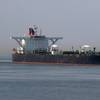MarineNews Insights with James Stark of GICA
From MarineNews, October 2010
MarineNews spoke with Jim Stark, Executive Director of the Gulf Intracoastal Canal Association (GICA) about his background in the industry, current projects on the canal, issues facing GICA’s nearly 250 members and his goals for the organization.
Can you describe your background and how you came to be Executive Director for GICA?
I spent 28 years in the Coast Guard. I’m a commissioned officer and have served all over the country including a considerable amount of time on the Gulf Coast. I retired in 2005 as the Chief of Staff for the Eighth Coast Guard District which covers the 26 inland states, the entire inland waterways system as well as the Gulf Coast. For three years I was also the Commander of Coast Guard Group Mobile, which oversaw much of the operations, navigation and safety on the intracoastal waterway in the Mississippi, Alabama and Florida side of the Gulf.
After that, in the fall of 2005, I worked briefly as a government liaison / operations manager with Titan Maritime out of Ft. Lauderdale following Hurricane Katrina. Shortly after that I was asked if I would consider a job with FEMA and eventually I became the directory for the Louisiana Transitional Recovery Office in New Orleans and then the Assistant Administrator for Gulf Coast Recovery overseeing the efforts of FEMA’s longer term recovery actions on the Gulf Coast.
After FEMA I took some time off and did some consulting work, most recently with the folks at BP on the oil spill in the Gulf. Although that was pretty limited, it did expose me to some planning efforts and tools I’ve put to good use already with GICA in getting ready for the hurricane season.
I joined GICA on July 6 and immediately focused my efforts on planning for our 105th annual convention, which we concluded in August. The event was a two and a half day convention in New Orleans that brought together many of our members and several of our stakeholders, such as the Corps of Engineers, the Coast Guard and NOAA.
Now I’m starting to focus more directly on the mission of GICA which is to make sure the Gulf Intracoastal Canal is maintained, operated and improved so that it can provide the most efficient, economical and environmentally sound water transportation route in the country.
What infrastructure projects are impacting the Gulf Intracoastal Canal right now?
The waterway runs from Apalachicola, Florida down to Brownsville, Texas and covers over 1,000 miles of waterway. It’s used by several industries. We serve the petrochemical industries, refineries and farms and recreation uses the waterways quite a bit as well.
Right now the Corps is building some pretty substantial and impressive flood control structures on the Intracoastal Canal. Toward the East of New Orleans, the Inner Harbor Navigation Canal surge barrier at Lake Borgne is being built and we work very closely with the Corps and the Coast Guard to ensure that barge traffic is not effected while that construction goes on. The Inner Harbor Navigation Canal lock has been authorized for replacement but no monies have yet been allocated.
Another very large flood control structure south of the Harvey Canal is called the West Closure Complex (closing off surge coming from the Gulf of Mexico into the west bank of New Orleans in the event of a hurricane or large storm event). This is a monumental undertaking by the Corps that has included the input of the industry, through GICA, to make sure it’s sized correctly and navigation interest are taken into account while it’s being built.
We also asked the State of Louisiana, the Office of Coastal Protection and Restoration, to speak at the convention about their master plan for restoring the wetlands and coastal region of Louisiana, which may have some impact on navigation and our waterway. We thought it would be a good idea to get out in front with those state partners rather than finding out a year or two from now that their plan is going to impact the waterway.
One of the biggest challenges we face on the Gulf Coast is hurricanes and storms and surge. GICA also acts as a leader on the joint hurricane team that’s been set up with the Corps, the Coast Guard and NOAA. Pre-storm, we work with all of our members and these government agencies to get out of the waterway and make sure we can find safe-haven. After a storm passes we work closely with those same partners to open up the waterway as quickly as possible. It’s in all of our best interest to get that going quickly because many industries depend on the commodities shipped on the waterway.
Beyond representing members in these projects, what other goals do you have for GICA?
One of the things our members truly value is the flow of information and much of my time is spent reviewing conditions on the waterway and making sure our members are aware of trouble spots, like shoaling conditions, marine casualties or planned closures of the waterways. Getting that information out to our members and users of the waterways is important. One of the things I want to do is refine our system for accomplishing this and make it very user friendly and comprehensive. This way people won’t always have the information pushed at them, but they can pull what they want, or tailor what information they need to see.











